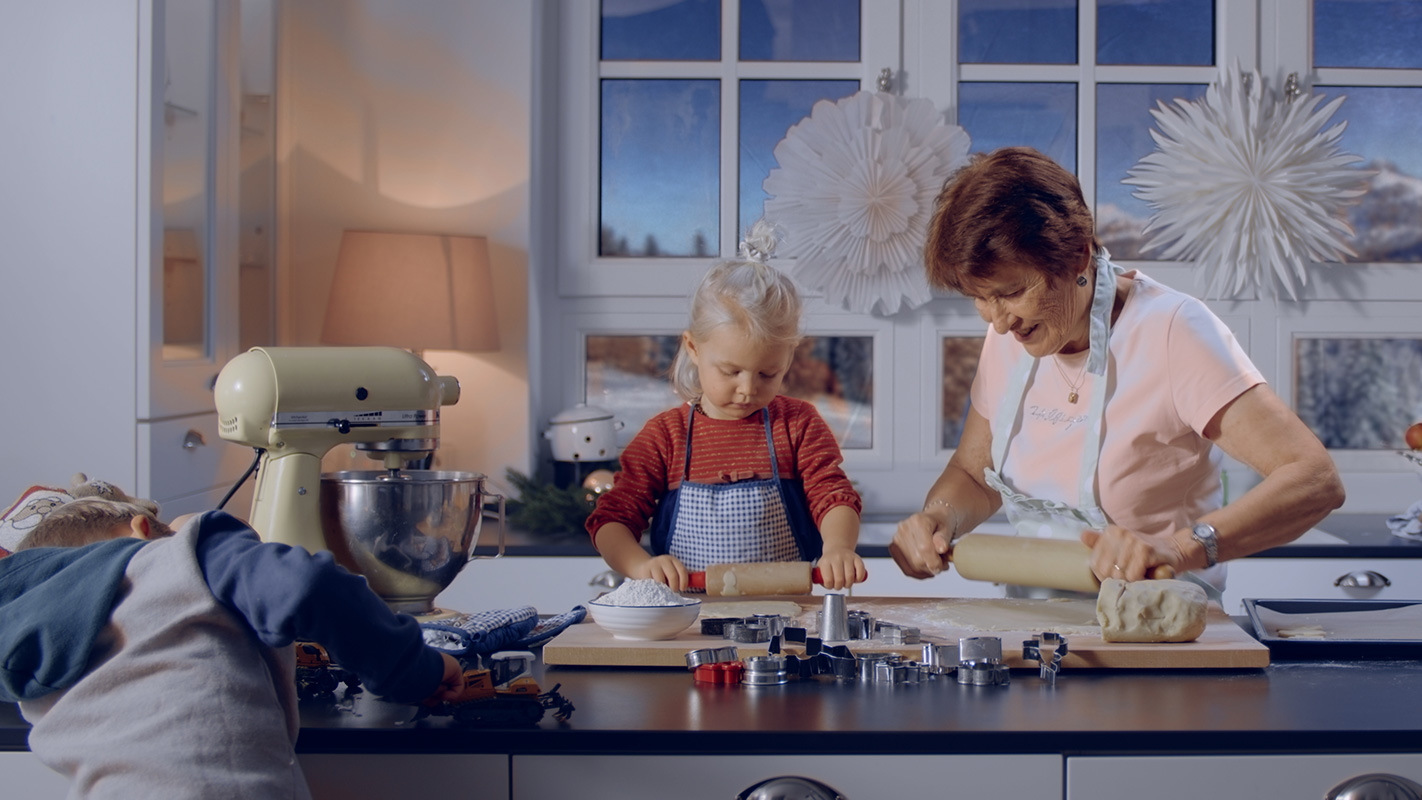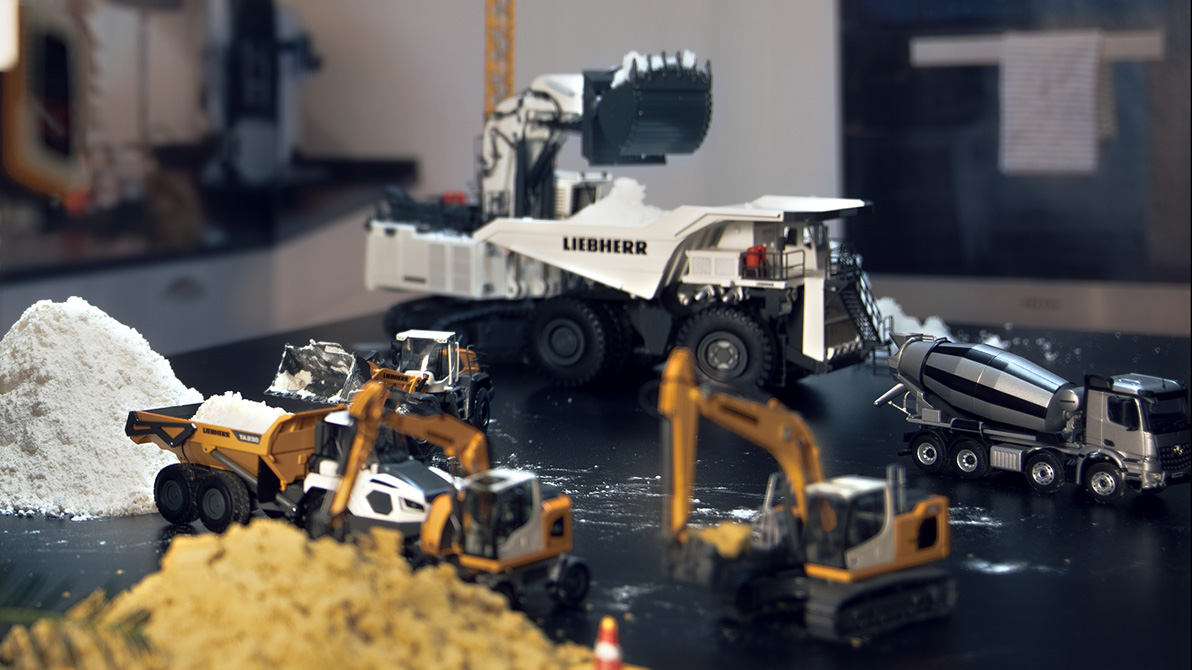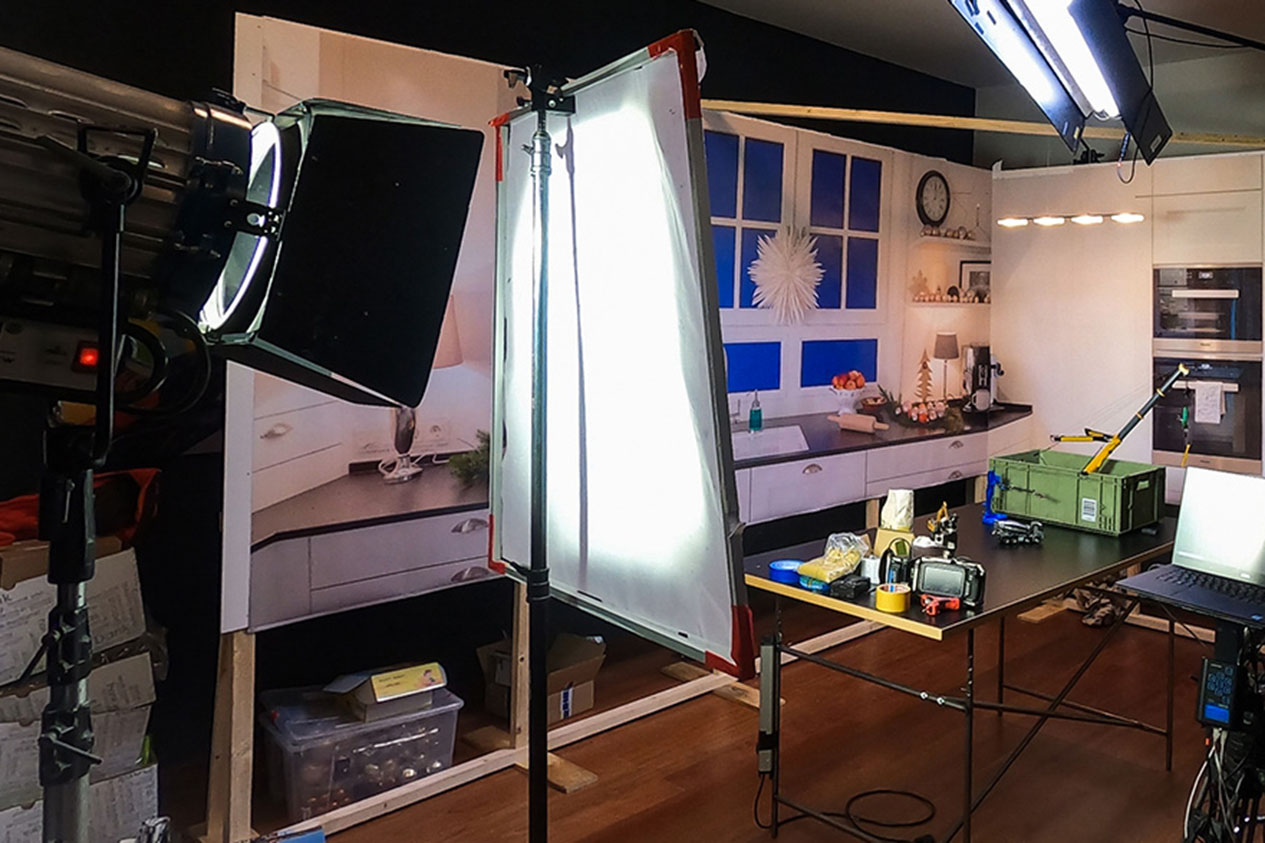
Kitchen feeling in the studio
In order to not have to turn a real kitchen into a Christmas bakery construction site during the entire production period, the kitchen was rebuilt in the studio on a scale almost true to the original. For this purpose, pictures of the original kitchen were taken, then printed on large canvases and attached to a wooden construction. In this way, a real kitchen feeling could be maintained throughout the entire studio production.
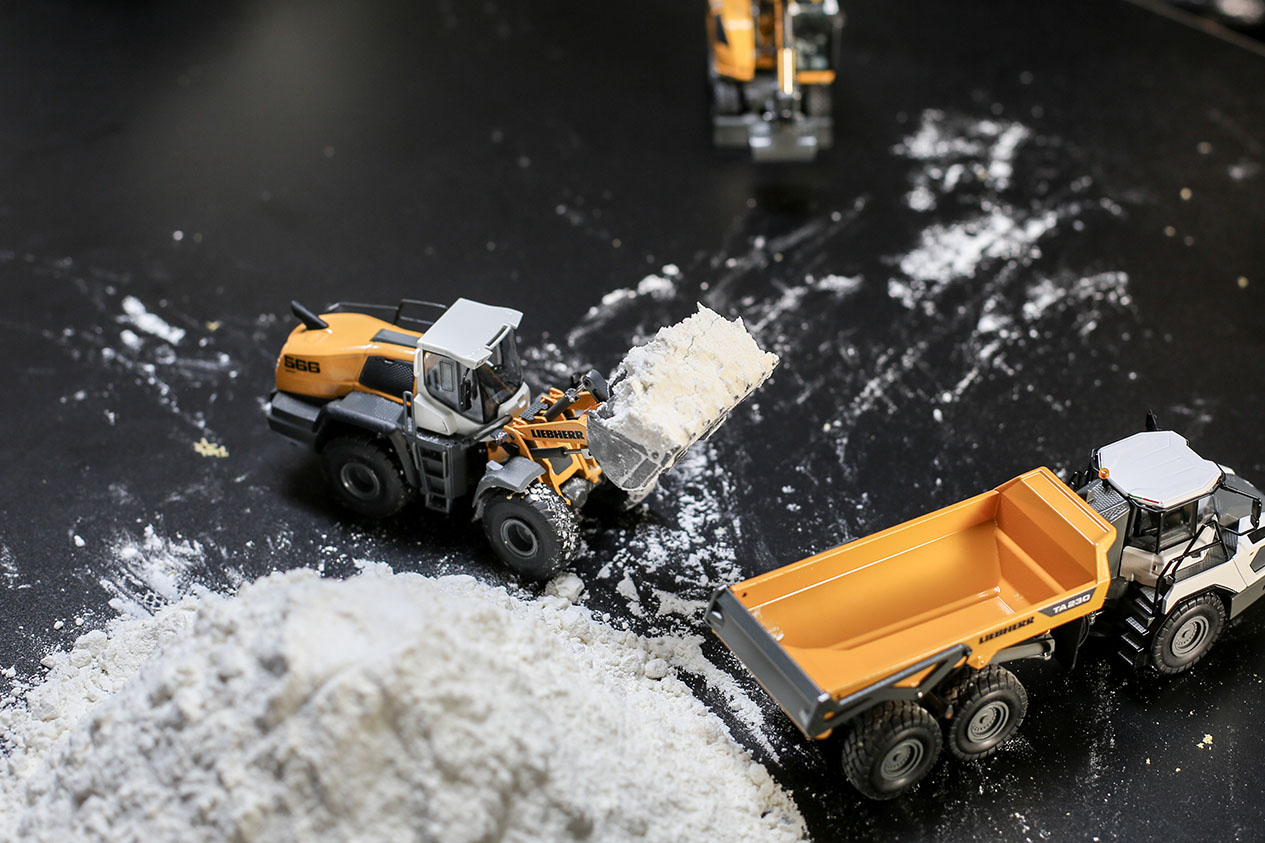
Good props are worth their weight in gold
To ensure that the composition of the ingredients was perfectly suitable for production, some things had to be adapted. For example, the sugar was mixed with water. This made the consistency suitable so it could be shovelled with a mining excavator. The butter was frozen overnight so that it could be fastened to the reachstacker with a fishing line without melting and the egg had to be blown out first so it could be transported through the material handling machine. Only the dough was fake. Here, modelling sand was used instead.
** Note: The data transfer to the USA associated with the data transmission to Google takes place on the basis of the European Commission’s adequacy decision of 10 July 2023 (EU-U.S. Data Privacy Framework).
Patience, endurance and precision work
For stop motion films, countless pictures are taken to be then played in a sequence, similar to a flip book. For each frame, the object in front of the lens is always moved a little bit in real precision work. In the end, this results in fluid movements. Here the dough is being rolled out by a bulldozer. Since it was easier to move the model forwards through the dough, the shots were then played in reverse order. The recording for this picture took about 2.5 hours.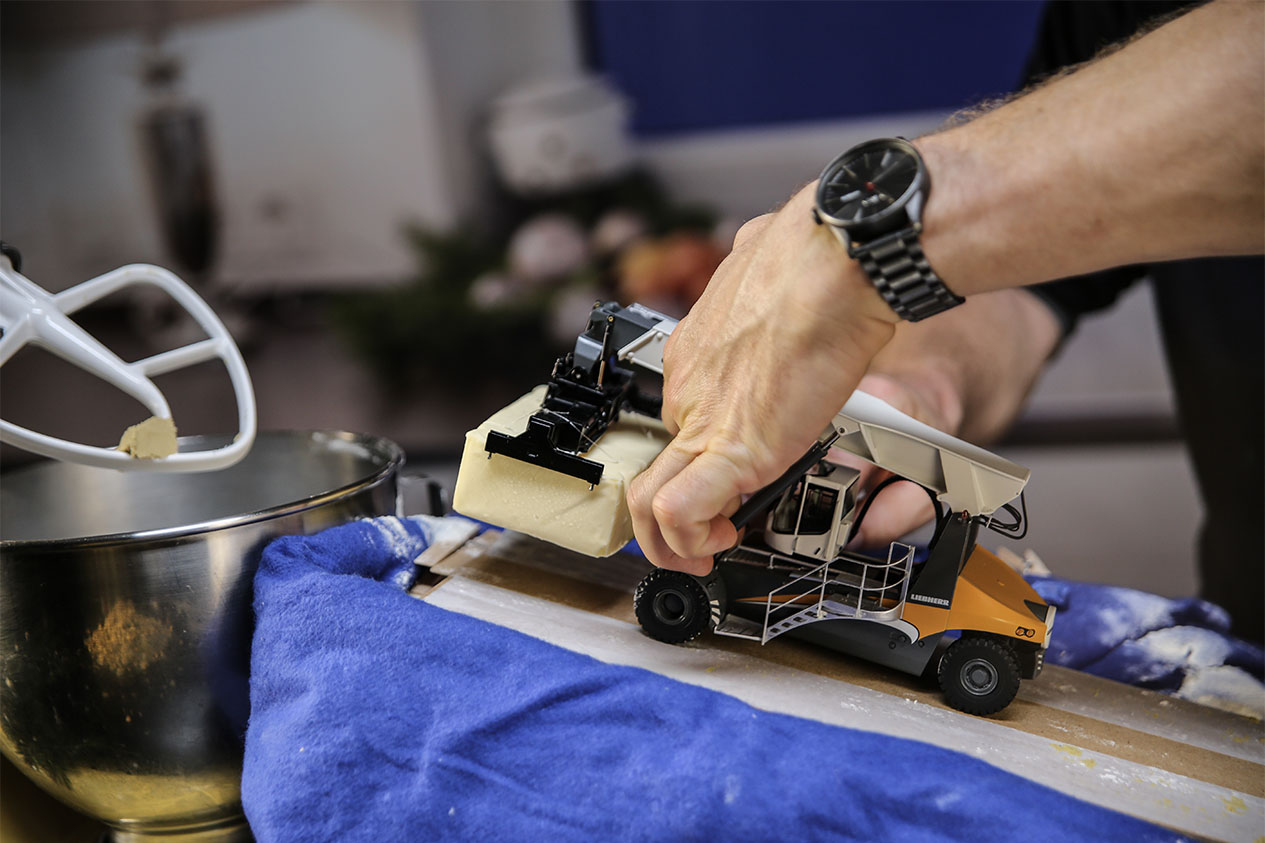
Strike a pose!
The main difficulty is that the objects must always remain in position for a few seconds until the picture can be taken. There are all kinds of helpful tricks for this. For example, to enable the reachstacker to stay in this position, it was supported by a counterweight attached to a transparent fishing line. Double-sided adhesive tape was also often used to ensure that the models did not accidentally slip out of place.
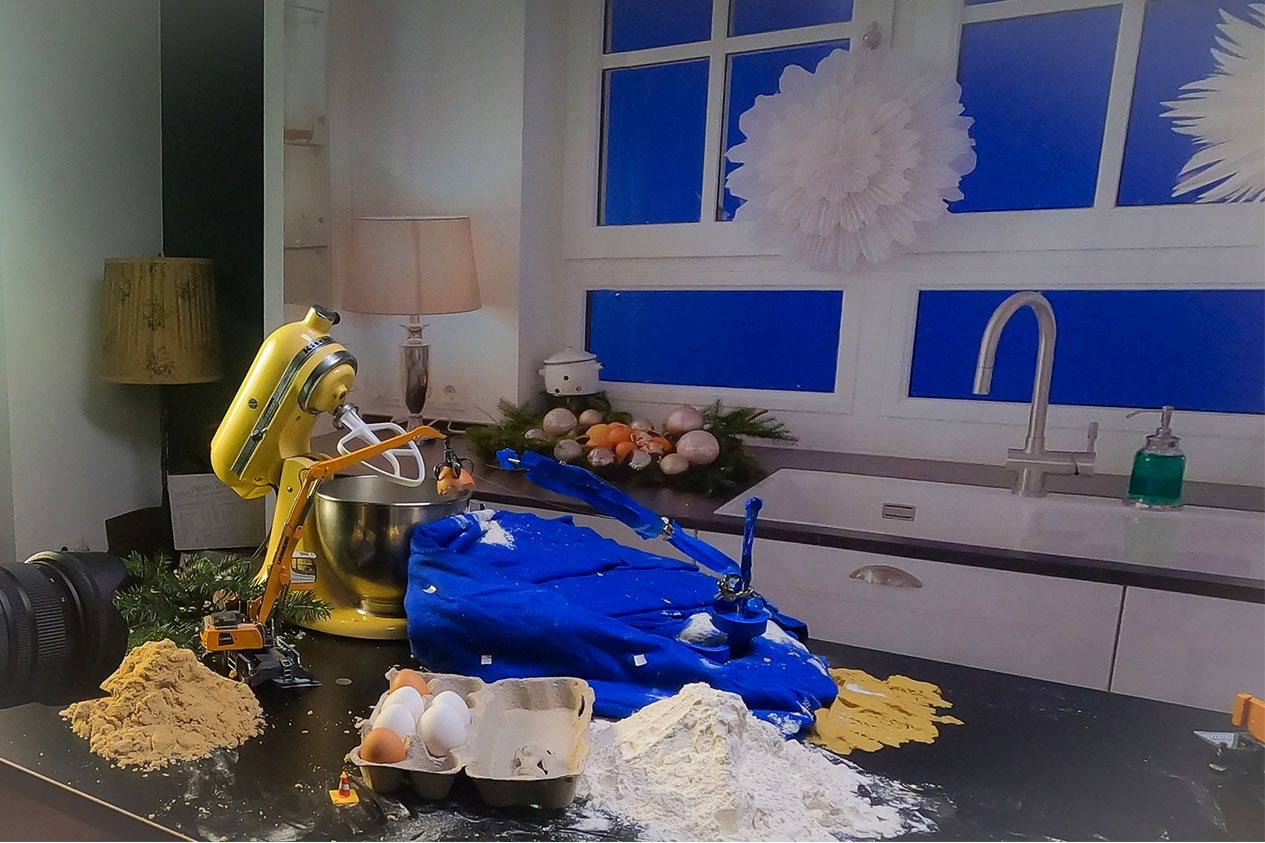
Praise to the editor
A so-called bluescreen, a technique for colour-based image cropping, was of further assistance. This technique makes it possible to subsequently edit elements into the images or even cut out necessary tools. For example, the magical winter landscape was created in the window, and supporting arms that held models or utensils in position were edited out later.
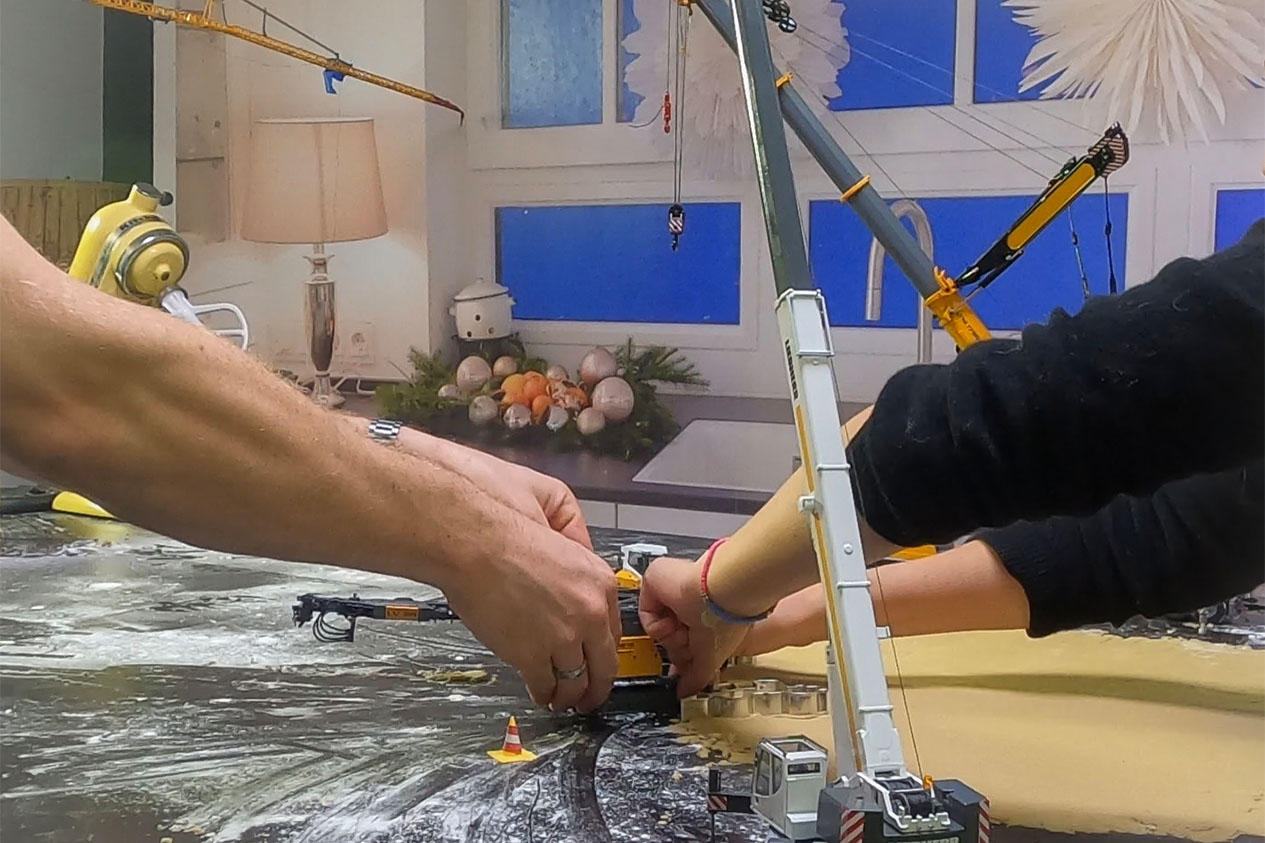
Real teamwork
A four-member team spent seven days setting up and dismantling scene pictures, moving models millimetre by millimetre, relocating props and manually taking picture after picture. What was still quite insecure on day 1 quickly turned into a well-rehearsed routine. Sometimes eight models were moved at the same time, which demanded highest concentration, good nerves and a constantly steady hand. But the icing on the cake was the editing. To get the final results, the video was edited for a another further 14 days.

